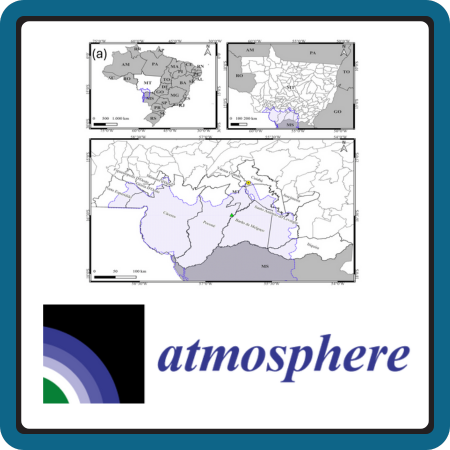 Dos autores Lucas C. Ramos, Thais C. Brunelli, Flávio C. Vicentin, Leone F.A. Curado, André M.S. Lima, Fernando G. Morais, Rafael S. Palácios, Nicolas N. Oliveira e João B. Marques.
Dos autores Lucas C. Ramos, Thais C. Brunelli, Flávio C. Vicentin, Leone F.A. Curado, André M.S. Lima, Fernando G. Morais, Rafael S. Palácios, Nicolas N. Oliveira e João B. Marques.
Publicado em Atmosphere.
--
Abstract
The Brazilian Pantanal region experiences intense biomass burning during the dry season, releasing large quantities of gasses and particles into the atmosphere, which have serious implications on both the climate system and public health. Understanding the dynamics of these emissions is crucial for mitigating the impact on the ecosystem, its functioning, and potential anthropogenic disturbances. This study focused on analyzing emissions in the northern Pantanal during the 2022 drought. Concentrations of fine particulate matter (PM2.5), black carbon (BC), and 25 chemical elements were measured using gravimetry, reflectance analysis, and X-Ray fluorescence, respectively, from samples collected between August and October 2022. The average concentrations of PM2.5 and BC increased approximately 4-fold and 2.5-fold, respectively, compared to averages from a decade ago. Significant increases were also observed in elements such as sulfur (S), potassium (K), iron (Fe), and silicon (Si). The maximum concentrations were comparable to values typical of the southern Amazon, a region known for high deforestation rates and land use changes. Elemental analysis revealed substantial shifts in concentrations, primarily associated with biomass burning (BB) and soil suspension. Additionally, enrichment factor (Ef) analysis showed that lead (Pb) levels, correlated with human activities, were 200 times higher than those found under clean atmospheric conditions.

